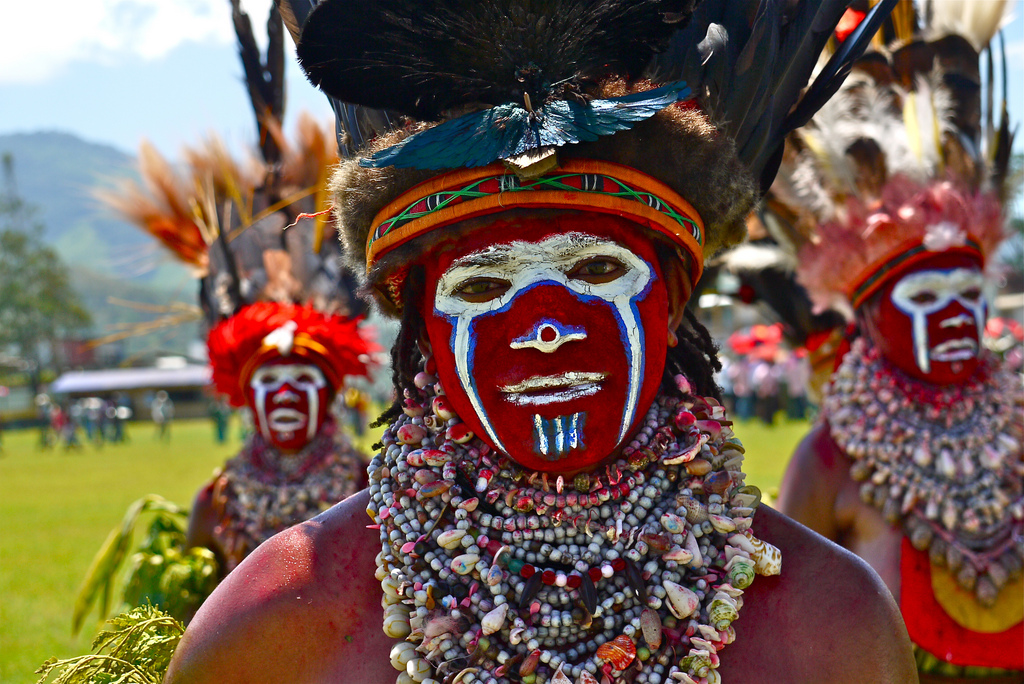Coming just a week after the inaugural South Pacific Defence Ministers Meeting in Tonga, Friday’s Australia–Papua New Guinea Defence Cooperation Arrangement helps cement the new Defence White Paper’s emphasis on security cooperation in our near neighbourhood.
The arrangement was signed during Julia Gillard’s first trip to PNG as prime minister—a visit aimed at updating trade, aid, education, police, immigration and other links as much as our defence ties.
The elevation of a defence deliverable Minister Smith would probably have enjoyed announcing himself (he’s driven this initiative and similar formal instruments with other partners), and its use in a prime ministerial visit not lacking other substance, helps signal the strength of the White Paper’s renewed focus on ‘the backyard’. Given PNG’s central place in the South Pacific, the deal showcases our commitment to regional security, stability and cohesion; gives concrete effect to deepening our strategic partnership with an important neighbour; and offers a possible centrepiece for region-wide joint training opportunities under the new regional exercise framework.
The arrangement is described as a principles-based statement of intent aimed at providing an updated framework to guide the continuing growth of our practical defence cooperation, rather than renewing ‘don’t sit under the coconut tree with anybody else but me’ vows or tightening already strong commitments to consult in the event of an external attack.
Accordingly, its key principles are likely to reflect specific dynamics in the bilateral relationship in addition to the general imperatives behind the White Paper’s focus on the South Pacific. Our close and longstanding, but always asymmetrical and occasionally testy, defence ties have warmed as Sandline-era scars heal. The fading into the past of a painful, PNG-initiated but Australian-funded, security sector reform process (from 2000 to 2006) to create a more stable and affordable force particularly helps. But ADF–PNGDF work together in RAMSI, during last year’s election, and to commence international peacekeeping, as well as PNGDF’s grace under pressure during the 2011–12 political impasse, have restored mutual trust and respect too. And the PNG Government’s initiation of its own National Security Policy and Defence White Paper processes has demonstrated its resolve to take its security more seriously, and also underlined our shared strategic interests.
Certain challenges naturally remain. Although longstanding ambitions to grow the PNGDF from 2,000 to 10,000 seem aspirational (and the force probably should be slightly larger—it had 3,500 personnel, including 450 ADF loan staff, at Independence) even modest expansion could distort age/rank structures and impose unsustainable cost and discipline pressures. Moves to increase military contributions to internal security, resource-protection, nation-building and economic tasks also pose tricky questions as well as opportunities for PNG’s White Paper and National Security Policy drafters. Signs PNG considered seeking a large Chinese loan to recapitalise the force (Beijing apparently responded cautiously) had potential to ruffle feathers too. And while slightly divergent approaches to capability and other issues are hardly surprising or cause for great concern so long as they continue to be approached constructively, positive attitudes probably remain vulnerable to scandals or gross acts of insensitivity.
Of course the fact some challenges remain only serves to underline the value of Friday’s deal. The PNGDF may not have the Indonesian Armed Forces’ potential as a defence partner, given the latter’s evolving high-end capabilities, but PNG looms large in Australia’s strategic thinking. Proximity counts, and while there’s probably something to suggestions the White Paper’s regional focus was partly cost-driven, Australia’s strategic geography makes our attention to the neighbourhood non-discretionary in peacetime and in war. Growing efforts to help rebuild a PNGDF that’s a strategic asset and not a liability for the ADF will be a good investment.
What then should we make of suggestions aid projects and military exercises with South Pacific countries such as PNG offer a relatively low risk opportunity to encourage cooperation with China? Well, at one level, any steps to further integrate Chinese activities into regional governance norms might seem welcome. But I’d guess officials will be pretty cautious. There are few signs Beijing intends to use its growing influence to carve out a strategic presence so far from its shores and close to ours. And it won’t be low risk to us if one day it does.
Officials may lose less sleep over Suva’s efforts to initiate a defence pact with PNG. Even if this gets off the ground, any assistance will be dwarfed by our own, and Port Moresby won’t be any keener to be lorded over by Fiji than us on peacekeeping. The PNGDF has earned some trust on its resistance to anti-democratic contagion and it might even positively influence the RFMF over time.
In the meanwhile, it’s encouraging that the defence story fits Ms Gillard’s theme that the overall bilateral relationship’s evolving along more mature ‘partnership’ lines. And although the ADF and PNGDF might still learn a thing or two about joint prioritisation and funding from AusAID’s 20-times larger country program—this sense of genuine partnership seems increasingly in reach. As such, Friday’s deal helps consolidate recent gains and offers a path for further progress.
Karl Claxton is an analyst at ASPI. Image courtesy of Flickr user Rita Willaert.


